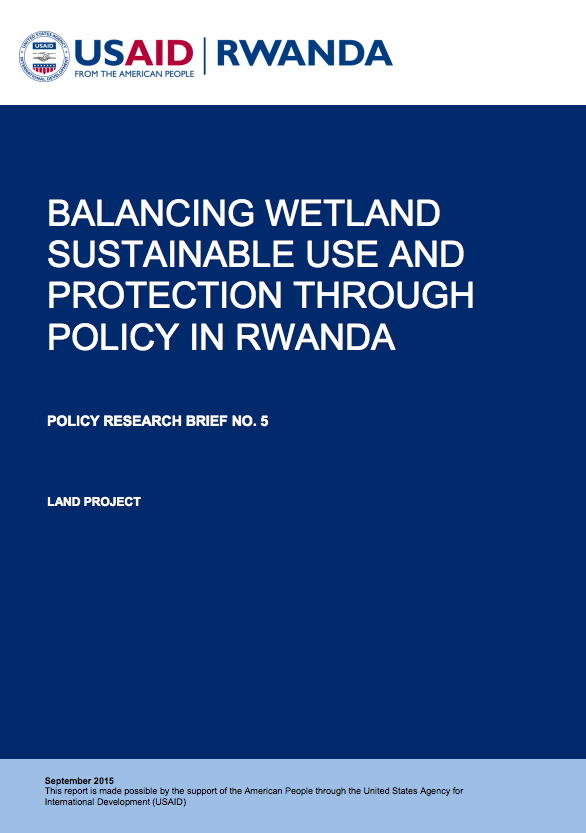Resource information
Rwanda has nearly 280,000 hectares of wetlands, almost 11% of the country’s total
area.1 These wetlands provide critical habitats for wildlife and biodiversity, maintain
important hydrologic processes that help to clean and protect ground and surface
water, support a variety of local livelihoods and largely define Rwanda’s idyllic
undulating topography.
2 Despite their ecological and economic importance, Rwanda’s
wetlands are being degraded and lost faster than any other ecosystem, with
projections suggesting a continued and increasing rate of loss due to climate change,
competition for resources, and land use conversions.
3 Currently, over half of
Rwanda’s wetlands are being used for agricultural use or energy production.
4 Ongoing
conversion of wetlands to agriculture, or for other economic activities, has increased
in recent years due to a growing population competing for limited land resources of
declining productivity.5
In order to protect a vulnerable and valuable ecosystem,
Rwanda is presently seeking to formalize use procedures and sustainable wetlands
management strategies through regulations, policies and plans.
To address wetland loss and degradation, land use planners and administrators are
seeking to impose more rigorous restrictions on wetlands management and use.
Policies, projects, incentives and regulations are being considered and developed to
ensure protection, restoration and sustainable use. These new policies must balance
human interest and land use with protection of biodiversity, wetland hydrologic
function and the environmental integrity of vulnerable ecosystems.
In Rwanda, all wetlands belong to the State and several laws frame processes for
wetland management and protection; however, there is a lack of clarity surrounding
the procedures for determining uses of wetlands that ensure their long term
sustainability. Without a clear mandate on how projects in wetlands should be
approved from the government, there has been some lack of detail surrounding
several key issues pertaining to wetlands use and protection, including: definitions of
terms, land tenure and pre-existing freehold titles, public use of State land, and
sufficiency of protection mechanisms. In spite of these issues, there is strong political
will to improve and adapt wetland policies so that sustainable use balances
conservation of wetland areas.

